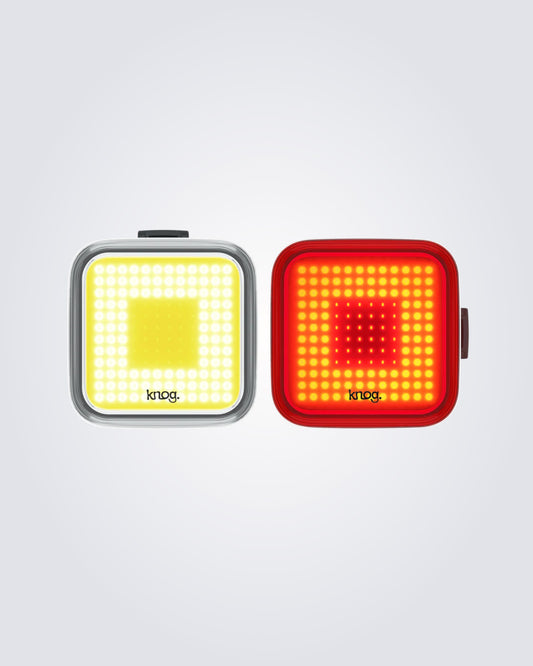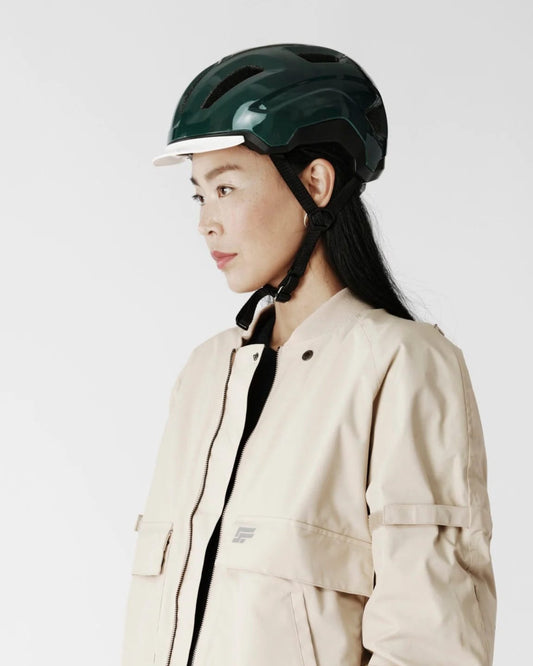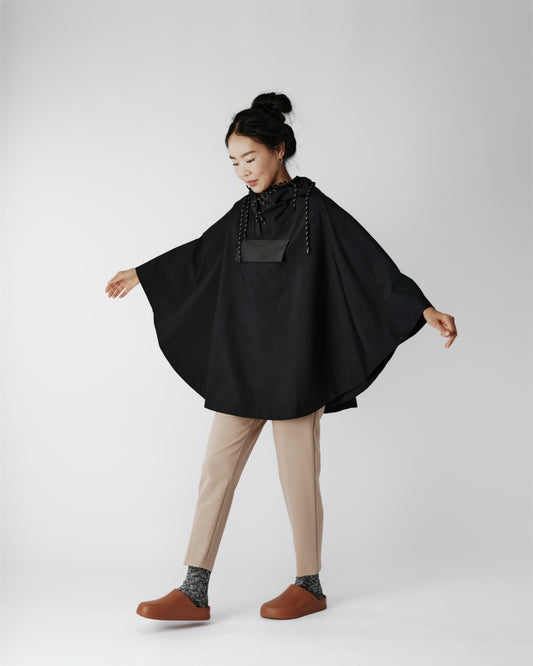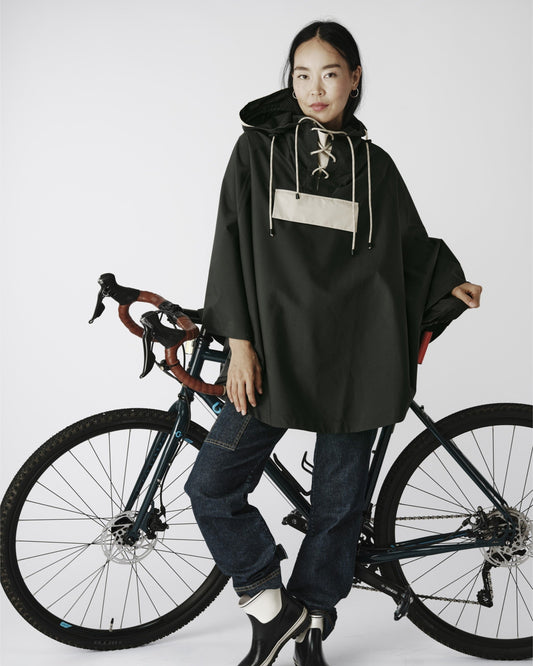The Best Commuter Bikes: Top Picks for City Riding
Commuting by bike has surged in popularity, with many city dwellers and suburbanites opting for two wheels instead of four for their daily travel. The right commuter bike combines functionality, comfort, and style, making the trip to work or running errands not just environmentally friendly but also enjoyable. With a myriad of options available, it's essential to find a bike that not only suits your route, whether it be city streets or mixed terrains, but also fits your body for a comfortable ride.

Finding the best commuter bike means looking beyond just aesthetics; it involves understanding the critical components that make for a durable and reliable ride. Important bike features like gears for handling hills, frame materials for durability, and braking systems for safety all play a role. Additionally, customizable options allow cyclists to enhance their bikes to fit personal needs and riding conditions. Whether riders look to install racks for carrying goods or want to upgrade to puncture-resistant tires for rough roads, tailoring a bike significantly improves the commuting experience.
Key Takeaways
- A comfortable commuter bike enhances daily travel and fits the rider's environment.
- Essential bike components and custom options contribute to a bike's performance and comfort.
- Safety, maintenance, and proper sizing are critical for an optimal biking experience.
Understanding Commuter Bikes

When one looks into the world of commuter bikes, they find a range of bicycles designed specifically for the hustle and bustle of urban environments. These bikes are tailored to enhance the daily trip to work or the store, prioritizing comfort, efficiency, and durability.
Types of Commuter Bikes
Hybrid Bikes: They're the jack-of-all-trades in the biking world. Hybrid bikes blend the comfortable riding position of a mountain bike with the efficiency of a road bike. They're ideal for those who want a bit of everything, suitable for various surfaces from pavement to gravel paths.
Folding Bikes: For the space savers and public transit navigators, folding bikes offer a transportable solution that one can fold away under a desk or carry onto a train. They're a go-to choice for riders with limited storage space or multi-modal commuters.
E-bikes: E-bikes, or electric bikes, are equipped with a battery-powered "assist" that comes via pedaling and, in some cases, a throttle. When someone's dealing with hills or just wanting to spare extra effort, the e-bike's motor can be a welcome feature.
Road Bikes: Built for speed and distance on paved surfaces, road bikes boast a lightweight frame and thin tires designed for rapid commuting over city streets. They're preferred by those who have a need for speed and a smooth ride.
Mountain Bikes: While not traditionally associated with commuting, mountain bikes can be an option for riders traversing rough urban terrain or seeking a sturdy, traction-rich bike that handles curbs and potholes with ease.
Key Features to Look For
Frame: The bike's frame should match the rider's size and riding style. An appropriately sized frame increases comfort and control, which are crucial for daily commuting.
Gearing: Essential for handling varying terrains, look for gears that suit the landscape. A higher number of gears is beneficial for hilly areas, while fewer gears may suffice on flatter routes.
Tires: Tire choice can significantly affect performance. Puncture-resistant tires reduce the chance of flats, a common annoyance for commuters.
Seats and Handlebars: Comfort is king, so one should select a bike with ergonomic seats and handlebars. Adjustable components allow a more tailored fit, which is perfect for long or frequent rides.
Storage Options: Some commuter bikes come with built-in racks or offer the ability to add them. This is a handy feature for those who carry bags or groceries.
Bike shopping can be exciting, but it's important to choose a commuter bike that ticks off all the functional boxes while also providing a comfortable and enjoyable ride for the day-to-day journey.
Important Bike Components

When choosing a commuter bike, one should closely examine key components that affect performance, safety, and comfort. These include the bike's braking system, the quality of the frame, and the type and durability of the wheels and tires.
Brakes and Gearing
Commuter bikes typically come with either rim brakes or disc brakes. Disc brakes, which include hydraulic disc brakes, offer better stopping power and work well in various weather conditions, making them a more reliable option. Gearing is essential too, as a good drivetrain ensures smooth transitioning between gears to handle different terrains effortlessly.
Frames and Materials
The bike's frame is its backbone, so one shouldn't compromise on this component. Frames are commonly made from materials such as aluminum or steel. Aluminum frames are lightweight and rust-resistant, ideal for easy handling and low maintenance. Steel, while heavier, provides added durability and a smooth ride.
Wheels and Tyres
Lastly, wheels and tires play a crucial role in how a commuter bike handles the daily wear and tear of urban riding. Durable tires can withstand punctures and rough roads, and many offer additional features for increased grip and control. Good wheels help in maintaining the bike's stability and improve the overall riding experience.
Customizing Your Ride

When they're personalizing their commuter bike, riders focus on two main aspects: practicality and comfort. Accessories aren't just about looks—they ensure safety and improve the ride quality.
Essential Accessories
Lights are a safety must-have, ensuring the rider is visible during early morning commutes or evening rides. A good set of lights can be found at Best commuter bikes 2024 and will make any bike more practical for daily use.
-
Racks and Panniers: They can check out options for racks that are sturdy and can accommodate panniers for extra storage capacity. This setup is ideal for those who carry gear, groceries, or work essentials.
-
Fenders: These are critical for riding in variable weather, keeping the rider dry from street spray. Most models, such as the ones discussed by Cycling Weekly, can now be easily attached to different types of bikes.
-
Locks: They ensure the bike stays where it's left. A durable, reliable lock is a wise investment for security.
Comfort Enhancements
Even the best bikes might need a tweak or two to fit just right, and small changes can significantly boost one's comfort on their commute.
-
Seats: Upgrading to a padded, ergonomic seat can make a longer ride much more comfortable.
-
Handlebar Grips: Custom grips can alleviate pressure on the hands and wrists, making steering and control far easier.
By considering these elements, any commuter can turn their bike into a bespoke mode of transport tailored specifically for their needs.
Safety and Maintenance
When they're hitting the road, cyclists should prioritize safety and consistently maintain their bike. A well-maintained bike is a reliable partner during commutes, and proper safety gear is essential.

Staying Safe on the Road
The right helmet can be a lifesaver. Cyclists should choose a helmet that fits well and meets safety standards. A snug fit is critical; a helmet should sit level on the head and not rock side to side.
Lighting is another crucial safety feature for being visible, especially during dusk, dawn, and nighttime rides. A bright front light and a red rear light help bikes stand out to motorists. Reflective strips or lights on helmets and clothing enhance visibility even more.
Upkeep of Your Commuter Bike
Regular minimal maintenance ensures a bike's longevity and a smoother ride. Here's what every cyclist should routinely check and have:
- Tires: Keep them properly inflated to the recommended PSI level to prevent flats.
- Brakes: Check brake pads for wear and ensure the brakes respond effectively.
- Chain: Lubricate the chain regularly to avoid rust and ensure it runs smoothly.
Having a basic set of tools on hand, such as a multi-tool for bikes, tire levers, and a patch kit, can help riders handle most of the common roadside repairs. It's best to learn basic maintenance tasks to keep the bike in top condition and avoid being stranded due to minor issues.
Economics of Commuting by Bike

Commuting by bike isn't just a healthy choice, it can also make a lot of financial sense. It's important to weigh the initial costs against the long-term gains, considering both the budget and the savings one may accumulate over time.
Budget Considerations
When starting out, the budget is a primary concern. Choosing the best commuter bikes isn't just about what looks good, it's about what fits within an individual's financial means. Commuters should anticipate the upfront cost of the bike, alongside essential accessories like a helmet, lock, and lights. For a decent quality bike that balances performance with durability, one might expect to spend from a few hundred to over a thousand dollars.
Initial Expenses:
- Bike: $300 - $1,000+
- Helmet: $40 - $150
- Lock: $20 - $100
- Lights and other accessories: $20 - $100
Compared to monthly public transport passes or the cost of maintaining a car, the initial investment can be offset relatively quickly. Honest, unbiased advice would suggest not skimping on the lock or the helmet as they are critical for safety and security.
Long-Term Savings
Over time, commuting by bike can yield substantial savings. There's no need to pay for gas, parking, or public transport fares, and when compared to a car, maintenance costs for a bike are relatively minor.
Annual Savings:
- Public transport pass: $100 - $200/month
- Car maintenance: $500 - $1,000/year
- Gas: $1,000 - $2,500/year
By cycling to work, one can potentially save thousands per year, which adds up significantly over time. Plus, bikes incur fewer repair costs, and even high-quality replacement parts or occasional tune-ups from a local bike shop remain far cheaper than car repairs. Another cost-effective benefit is the physical fitness that comes with cycling, which can decrease healthcare costs by promoting a healthier lifestyle.
The Best Bikes for Different Terrains

Choosing the right type of bike depends heavily on the terrain. City cyclists will prioritize different features than those tackling off-road trails, with tire design and bike construction playing pivotal roles.
City Biking vs. Off-Road
For urban environments, road bikes are often the go-to. They typically feature narrow tires and lightweight frames for nimble movement and speed on paved streets. The Best commuter bikes might also include mounting options for racks or panniers, essential for city dwellers carrying items.
In contrast, off-road biking demands durability and traction. Mountain bikes are equipped with wider tires, suspension systems, and strong frames to handle rocky and uneven trails. Off-road tires are designed with deep treads for superior grip in dirt or mud.
Versatility Across Environments
Some riders need a bike that can handle multiple terrains. Gravel bikes are a hybrid, built with versatility in mind. They offer tire clearances big enough for chunky gravel tires, yet they are efficient enough for the daily commute.
These bikes can transition from asphalt to gravel trails with ease, making them a popular choice for adventure riders or those who prefer to take varied routes. They strike a balance between the speed of a road bike and the ruggedness of a mountain bike.
Choosing the Right Bike Size

Selecting the correct size for a commuter bike is crucial for comfort and efficiency. They should start by measuring their inseam length, which will guide them towards the appropriate bike frame size. For instance, a person with a 70 cm inseam may be suited for a 47 cm road bike or a mountain bike that's about 19 inches, as highlighted by Cyclists Hub.
Bike geometry and reach also play a significant role in finding the right fit. An upright ride position is often preferred for commuting since it provides a more comfortable stance, especially during long urban rides. This position can reduce strain on the rider's back and improve visibility.
To determine if a bike has the right reach, riders should sit on the bike with their hands on the handlebars. They should feel comfortable, with their arms slightly bent and their back at a natural, relaxed angle.
Here's a brief guide to get started:
- Measure your inseam: Stand straight and determine the length from the ground to your crotch.
- Consult size charts: Use sizing charts like the ones provided by Halfords to find the corresponding bike size.
- Check the reach: Ensure you can comfortably grasp the handlebars without overextending.
- Test ride: Always ride the bike to make sure the size and geometry feel good.
Remember, personal preference plays a big role, so a test ride is always the best way to ensure the right fit.
Where to Buy and Expert Reviews

When looking for the best commuter bikes, retail giants like Decathlon and REI are often the go-to spots. They offer a variety of options suitable for the ride to the office. Decathlon, known for its value, stocks the Elops City 920, which has been hailed as a best-value commuter bike. REI, on the other hand, provides bikes from trusted brands and often has knowledgeable staff on hand to assist in finding the perfect bike.
Expert reviews are crucial in making an informed decision. Reading through reviews on sites like Cycling Weekly and Bicycling can offer insights into the quality, performance, and value of the bikes. For instance, Cycling Weekly has extended their lineup with new frame designs for popular models like the Sirrus 6.0 and Sirrus X 5.0.
| Retailers | Popular Choices | Reasons to Consider |
|---|---|---|
| Decathlon | Elops City 920 | Best-value pick |
| REI | Co-op Cycles | Quality and Expertise |
| Online | Cannondale Bad Boy 3 | Best Overall |
| Aventon Level Commuter | Top Electric Option |
Online resources and bike forums can also be a treasure trove of information where enthusiasts deeply immersed in the cycling world share their experiences and advice.
Pro Tip: Always check online for expert reviews before heading to the store. This way, individuals arrive armed with knowledge and ready to ask the right questions.
Frequently Asked Questions

Selecting the right commuter bike is essential for a comfortable and efficient ride. These frequently asked questions help narrow down the options for anyone looking to invest in a quality bike for daily commutes.
What should I look for when choosing a bike for daily commutes?
When selecting a commuter bike, one should prioritize comfort, durability, and ease of maintenance. Features such as gear range, tire type, and frame material are critical for accommodating various terrains and weather conditions.
Can you recommend a good bike brand for city riding?
Specialized is a brand that often comes up in discussions about top commuting bikes, notably for their Sirrus lineup, which blends speed and reliability for city riding.
What's a reliable yet affordable commuter bike for someone on a budget?
For those on a budget, the Schwinn Collegiate Adult Hybrid Bike offers a good balance of quality and affordability, making it a solid choice for cost-conscious commuters.
Which is the lightest bike suitable for daily commuting?
Commuters looking for light bikes should consider models with aluminum or carbon frames, as these materials offer the best trade-off between weight and durability.
Are there specific commuter bikes that are ideal for beginners?
Beginners may appreciate commuter bikes with a more upright riding position for comfort, and those without complex gearing systems for ease of use.
What are some top city bikes designed for women?
Certain bikes are designed with women's ergonomics in mind, offering shorter top tubes and handlebars closer to the saddle for a comfortable commute.







